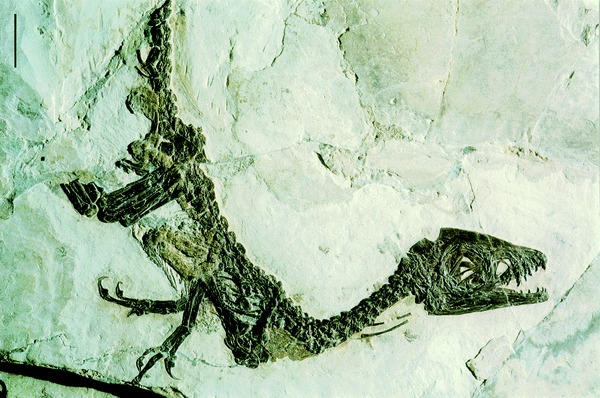Fossil Friday #1 - Scipionyx
Not only is the solely known fossil belonging to the Coelophysid dinosaur, Scipionyx samniticus, one of the most unique dinosaur fossils in terms of preservation, but its story of discovery is a tale for the ages in itself.
The specimen was discovered in 1981 by amateur Palaeontologist, Giovanni Todesco in the Le Cavere quarry, close to Naples, Italy. Being an amateur is an important aspect of the story, as Todesco was not aware of the significance of his discovery. At this point in time, no Dinosaur had ever been discovered in Italy, so he assumed that it was the remains of an extinct bird. He would go on to prepare the specimen in the basement of his own home, without the use of any optical instrument to examine the specimen properly whilst doing so - something that should make any Palaeontologist curl up in their seat in frustration. He would also tamper with the stone in which the specimen lay, by adding stone plates to the rim to reinforce its strength and adding a fake tail to the specimen, with the reason being that he failed to recover this part of the original specimen when it was discovered.
The specimen would then stay in his home, unknown to the outside world until 1993, when Todesco brought the specimen's attention to Giorgio Teruzzi, a Palaeontologist from the Milan Natural History Museum. Along with the help of fellow Palaeontologist and dinosaur expert, Giuseppe Leonardi, the type specimen was officially reported, a full 12 years after discovery. But this was not the end of the story!
The specimen gained a lot of publicity, being the first dinosaur ever discovered in Italy, and coincidentally being reported in the same year that Jurassic Park was released in cinemas around the world when public interest in prehistoric fauna was at an all-time high. Professional preparation of the specimen was undertaken in Salerno, where the fake tail was removed. This was also when the most significant part of the fossil was finally uncovered - the presence of soft tissues.
Scipionyx samniticus holotype specimen.
In 1998, 17 years after the initial discovery, the specimen was officially named as Scipionyx samniticus. This near-complete individual is thought to be a juvenile and dates back to the early Albian age of the Cretaceous (110 ma).
The preservation of soft tissues in vertebrate fossils is incredibly rare, and although muscle tissues have been found in other dinosaur specimens, Scipionyx is still the only known one to date that displays the presence of major internal organs, blood, cartilage, connective tissue, bone and muscle tissue, the respiratory system and the digestive system. (Farlow, 2012)
References
Farlow, J.O. (2012) “Scipionyx samniticus (Theropoda: Compsognathidae) from the lower cretaceous of Italy: Osteology, ontogenetic assessment, phylogeny, soft tissue anatomy, taphonomy and palaeobiology,” Historical Biology, 24(5), pp. 579–580. Available at: https://doi.org/10.1080/08912963.2012.654705.




Comments
Post a Comment